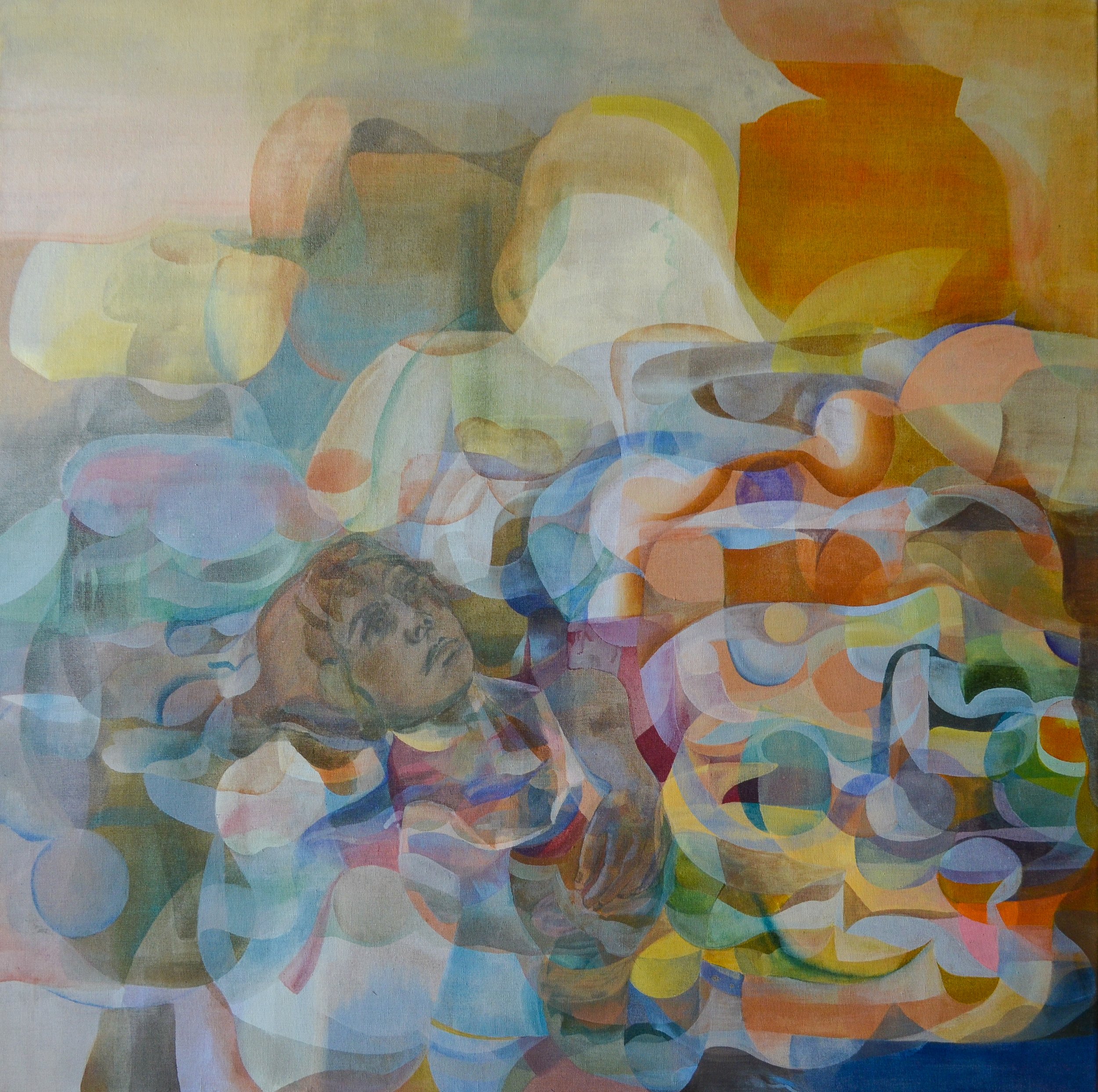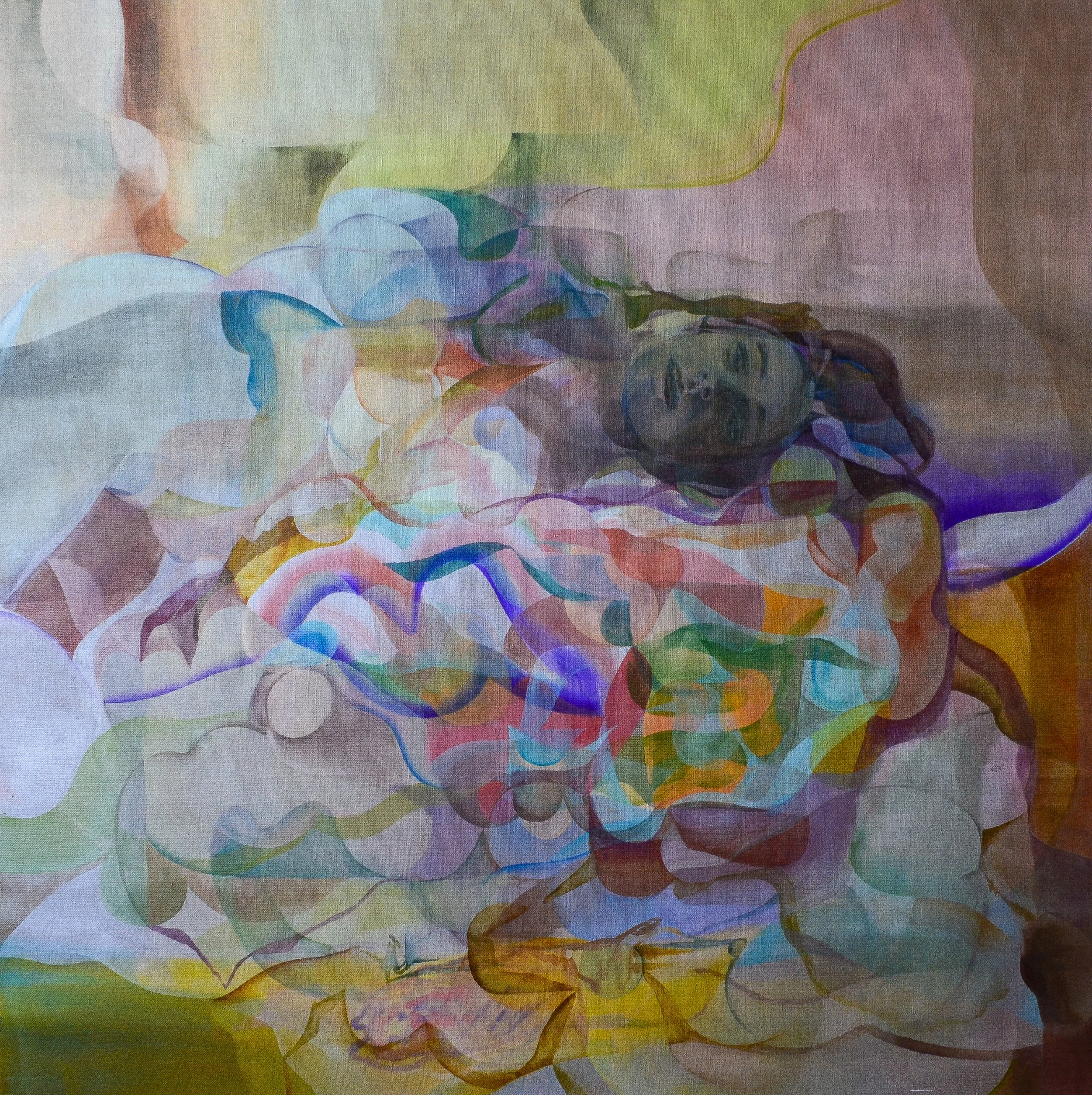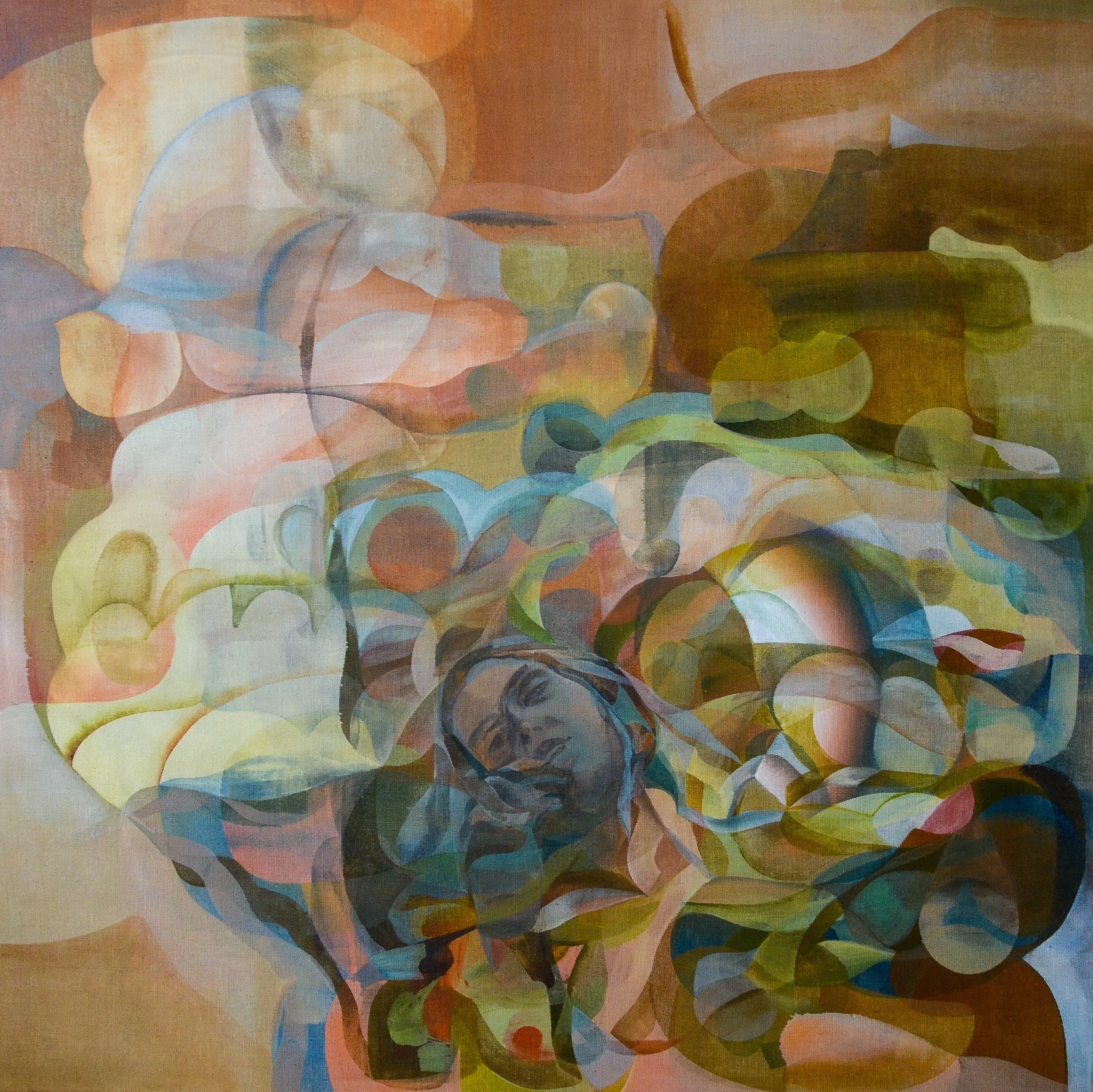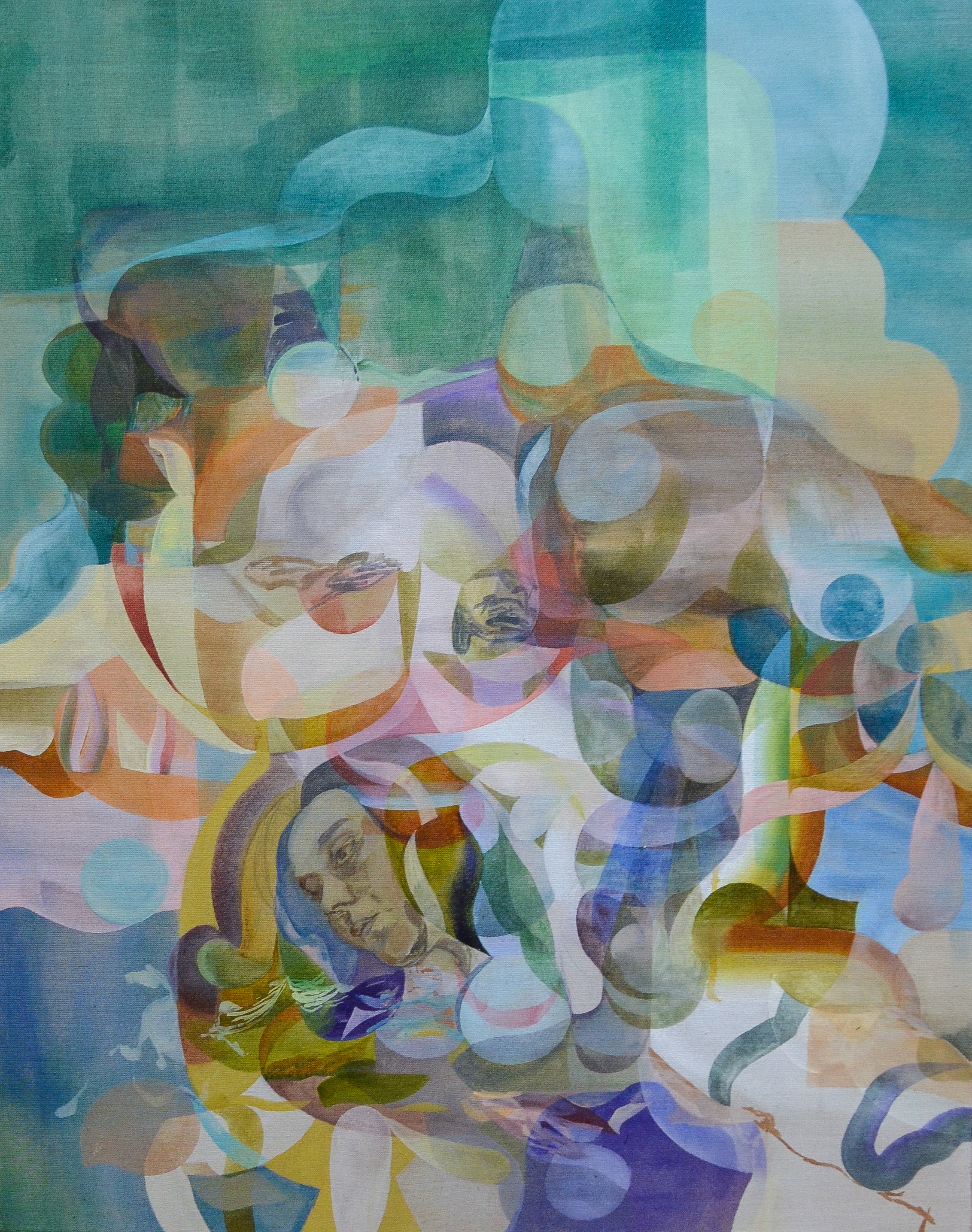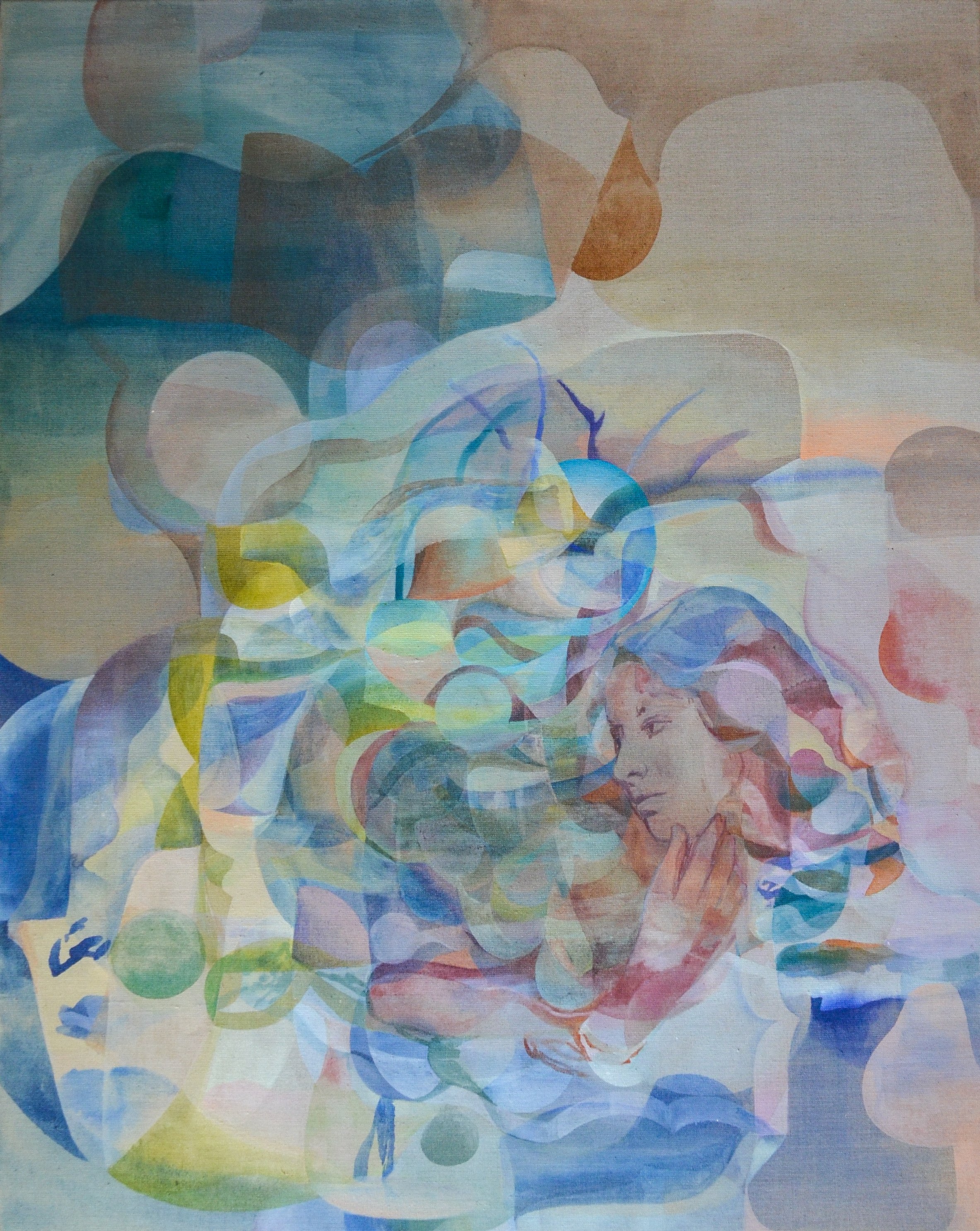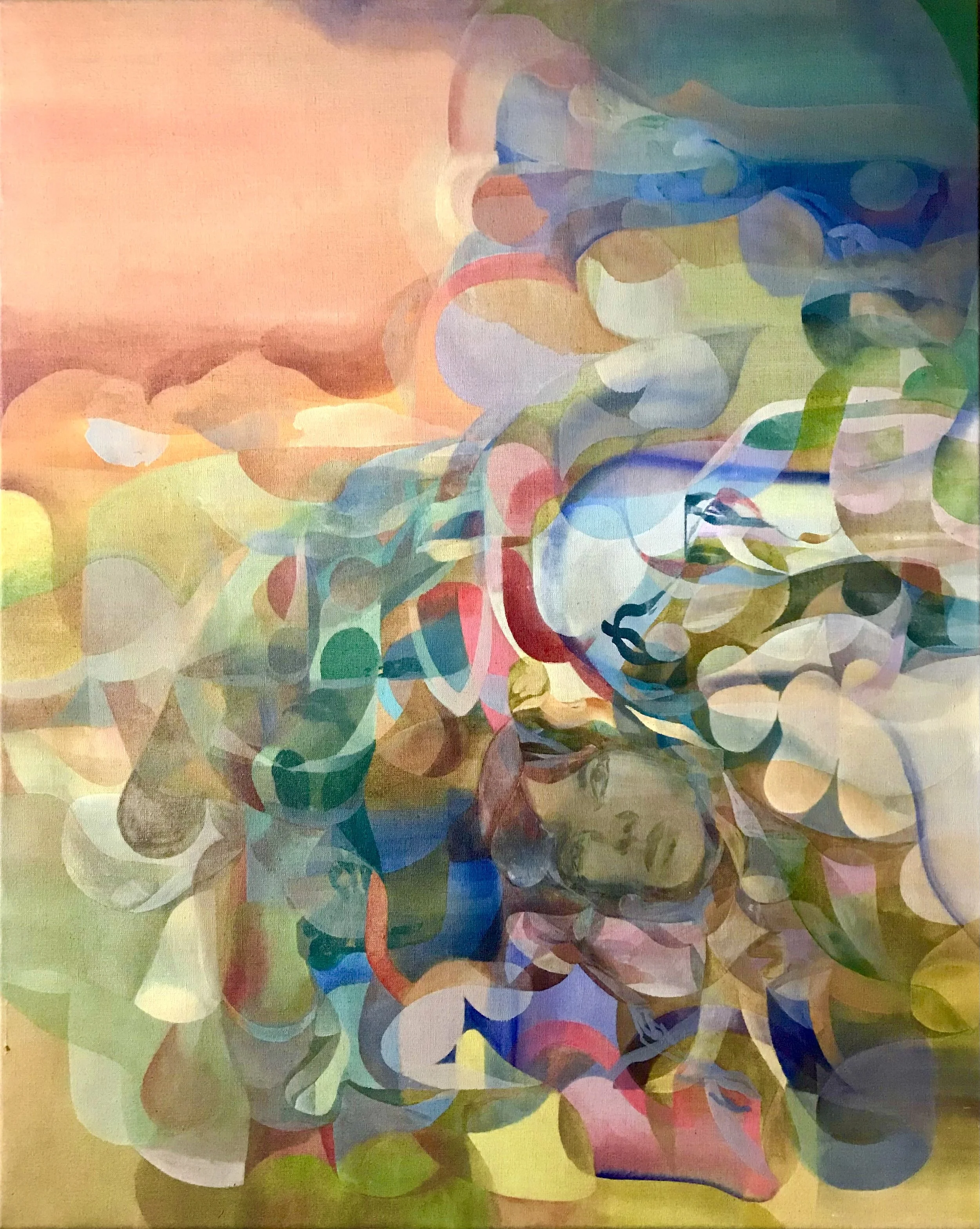Inga de Martin
Inga de Martin is a Hamburg-based abstract painter, designer and owner of The One & Only Collection.
Inga de Martin's painterly work, moves in the transitional realm between object and non-object. Echoes of natural forms and landscape fragments can be glimpsed in her paintings. "It is a kind of limbo between thing and freedom that I seek in my painting, a state I achieve only by finding a balance of chance and creative guidance in the painting process. The painting does not emerge according to my fixed will to create, rather it comes together under my hands."
Using Chinese ink, she loves the transparency through layers of colors, which evoke a sense of permeability that equals a state of consciousness.
Colour can allow memory and imagination to interact. „I see the world with its contours, with the spaces in between and its deeper dimensions. One cannot understand it, only perceive it. I explore where there is a harmony or something blossoms or just the opposite exists. These perceptions flow directly into my painting and find their expression.
This composition arised from a meditative intuitive process that allows the viewer to memorize and imaginate to interact and allows the viewer to have their own interpretation and experience- pushing them to unexpected places.
Could you tell us more about your background and how you began creating art?
Already as a young person, I discovered my passion for drawing and painting. I was more introverted and observant. Creative expression was for me like a gateway and tool at the same time. After graduating from high school, there was only one option for me, to choose an artistic course of study.
However, I did not dare to study fine arts after school, because I had too much respect for this freedom. In a fashion design study, a more applied creative work, however, I could quickly make the experience that my creative power was greater than I gave myself credit for.
During my studies I developed a meticulousness for painting so that my painting classes became in the meantime more important to me than my design classes. I was especially encouraged through a mentor and during my studies I already won an important German art award for painting. I took this as a sign to pursue my painting more seriously and to develop it further.
What does your art aim to say to its viewers?
The paintings do not follow a narrative. No big backstory, in the sense that it points precisely to something, only the desire to convey a feeling that wants to express itself. One can open oneself intuitively to the paintings. They possibly speak more to a level that allows the viewer to reveal even the subconscious and hidden. I relate to the idea that my paintings are like poems, secret transactions. Sometimes I myself understand only after some time, connections of my images, their genesis, and my life.
Can you tell us about the process of creating your work? What is your daily routine when working?
The place where I paint is also my home. This is actually an important aspect of my artistic work. It's important to me to be able to access my artistic work at any time and to be surrounded by it. In this sense, there is no work-life balance for me. Simply because everything is connected for me. It establishes my being. But it also means that I can interrupt my work at any time to do something else. Creative working in this way helps me to be in the flow and spontaneously continue the process. Painting itself must not become something sacred or something special for which I go somewhere and scoop time off. Sometimes I jump up unawares, because I suddenly understand in a work in progress how to complete a passage in the painting. I feel this way of working as freedom.Basically, however, I lose my sense of time completely when I paint. In addition, I paint very quickly. I have to stop myself rather, especially at the beginning of a new work, to experience the process even more consciously and to let the respective painting grow naturally.
My paintings go through a lot of changes en route to the right color, density and most importantly rhythm and mood. Sometimes it takes only a small change in one spot, almost inconspicuous and the image steers in a completely different direction and changes the whole atmosphere.
When I paint, I can say that this activity itself is a natural invitation for me to live in the present moment. Without approaching the creation of these works without preconceptions, I instead let my own creative process guide the work. The work then, creates itself. No plan, no content, just the quiet progression on the surface through a spontaneous action and in turn a response to what has been done before. A conscious practice that I have opened up to more intensely in recent years. A non-grasping contemplative attention emerges. A process that could be described as a "seeping in" of consciousness for me. I think ,it weaves in anyway everything that is held in the present consciousness. Jean Klein expresses it very beautifully: The "consciousness as the witness, is the gate open to experience." When a painting is finished, I can sense my painting more than I can talk about it.
The interplay of color and form has to me the power of rejuvenate and to view the world through fresh eyes.
In the end, I have no other scale for painting, than the degree of having to do it, that is, the degree of deepening awareness while painting.
What is the essential element in your art?
My initial inspirations for this series of my recent abstract figurative works were fleeting memories that evoked deep emotions as well as spiritual longings. They allude to such moments when the mind has space for contemplation and meditation on the natural environment. From a metaphysical perspective, I view the works as expressions of creation in its various manifestations: biological, artistic, and contemplative.
I strive to respond to each canvas with intention and acceptance - approaches that reach beyond painting into all areas of my life. Each of the paintings is like a memory, but a memory that is more of an "idea" or "emotion" that is not fundamentally rooted in a specific moment. I hope that the ambiguity and abstraction of the work will foster a phenomenological state in which the viewer can have a direct, unmediated experience of the work.
Abstractions are to me products of metaphysical thinking.
I am trying to circumvent with my paintings the prefabricated alternatives that lie between sensation and thought, senses and intellect.
In your opinion, what role does the artist have in society?
I think it's difficult to be brief on this question. One could write a whole book about it.
Every witty artistic position can show human phenomena from different perspectives. It's about paradoxes, interactions, history, cultures and visions. Artists can change and transform our own perspectives and point to something that was not in our consciousness before. Something is made visible and thus also tangible in a very sensual aesthetic way. It doesn't have to mean that artists per se improve the world, but it can at least hold up a mirror to the world. I myself have always been interested in art that has an eternal beauty, through an inherent fragility and vulnerability. I personally am drawn to art that apprehends me, that quakes my spirit and that keeps me in my body. Keeps me attentive and slow. An art that does not arouse emotions in me or act sensitively, even in a subtle way, passes me by. But even a small painting by Edouard Vuillard for example can evoke my senses. Simply because it is painted so ingeniously sensitive. I then want to and can merge with such a painting. A valuable experience, at least for me!
Instagram https://www.instagram.com/ingademartin/

